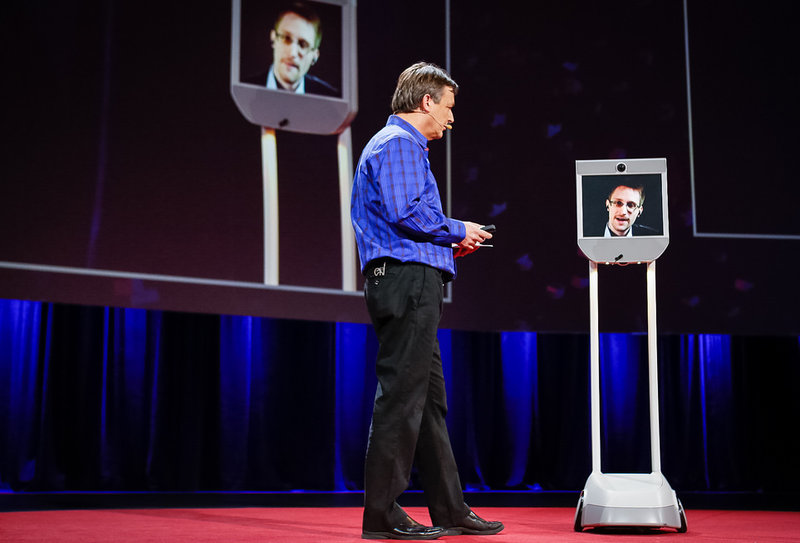NEW
Edward Snowden's robot
The former CIA systems administrator has continued to disclose secrets of US global surveillance thanks to a long-distance communication robot
Up until a year ago, Edward Snowden was just another computer systems administrator. However, in June 2013, the former CIA employee was thrust into the public spotlight after he revealed to the press classified material about a secret global internet surveillance programme organised by the US's National Security Agency (NSA), for whom he worked.
In next to no time, worldwide public interest raised Snowden's profile to the level of Wikileaks head, Julian Assange, who is still confined to the Embassy of Ecuador in London, where he was given political asylum. Along with Assange, Snowden has become a priority objective for the American authorities.
Snowden, from his refuge in Hong Kong, managed last August to gain temporary right of residence in Russia, where he has been ever since. Despite his precarious political status, Snowden has continued to publicly reveal information about the range and effects of the NSA's PRISM programme thanks to a telepresence robot that has been affectionately dubbed Snowdenbot.
Telepresence
The technology that allows the user to engage with an audience over great distances was first used by Snowden when he was invited to address an event of the TED organisation at the beginning of this year. Snowden was able to interact with audiences in Vancouver and New York by using a BeamPro, a wheeled vehicle with screens that allows the user to be telepresent in a distant venue over a wi-fi connection. Using his computer keyboard, Snowden was able to control the bot that featured his face on a screen, while his voice was projected through speakers.
Since the success of the TED experience, Snowden has continued to use the technology to interact with the New York office of the American Civil Liberties Union (ACLU), an organisation with which he has a close association, as well as with his lawyer, Ben Wizner. Other institutions around the world, such as the Freedom of the Press Foundation in California or the University of Glasgow, have since considered obtaining their own BeamPros in order to maintain face-to-face contact with the exiled Snowden.
However, as Andy Greenberg explained in Wired magazine, a drawback of the telepresence robot is that the encryption system used by BeamPro is not immune from interference from, that's right, the NSA PRISM programme.
Hollywood's most famous chair
marti.crespo@partal.catYou probably did not even notice it, but it has been seen many times on screen in films and TV series, including The Dark Knight, I-Robot, Rookie Blue, Law & Order, Sex and the City and House M.D. The item in question is a simple chair, the Emeco 1006 [emeco.net/about-emeco/1944] or the “Ten-O-Six” [en.wikipedia.org/wiki/Emeco_1006] as it is also known, possibly the most icon piece of furniture in the history of American cinema.
Made of aluminium, and therefore both durable and light, the chair was originally designed for use on US submarines and manufacturing began in 1944 under the name the Navy Chair [goo.gl/keR35d]. However, since then, the history of the Navy Chair [goo.gl/vFLMie], catalogued as product 1006 by Pennsilvania's Electric Machine and Equipment Company (Emeco) and hence its name, has experienced a host of ups and downs.
Yet, the Ten-O-Six has survived and has been exhibited in the Museum of Modern Art in New York since 2001, as well as appearing in numerous fashion and design magazines, while becoming the interrogation chair of choice in a host of films and TV programmes.
The Emeco 1006 is still manufactured in the same way as it was in 1944, in a process that takes two weeks and requires 77 different stages [vimeo.com/42591587]. Recently, Emeco and Coca-Cola signed a deal to create the 111 Navy Chair [emeco.net/material/recycled-aluminum], a replica of the classic 1006, but made with the recycled plastic from 111 Coke bottles. As a result of the initiative almost 12 million bottles have been turned into chairs in only three years.

